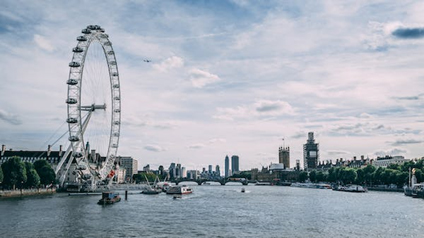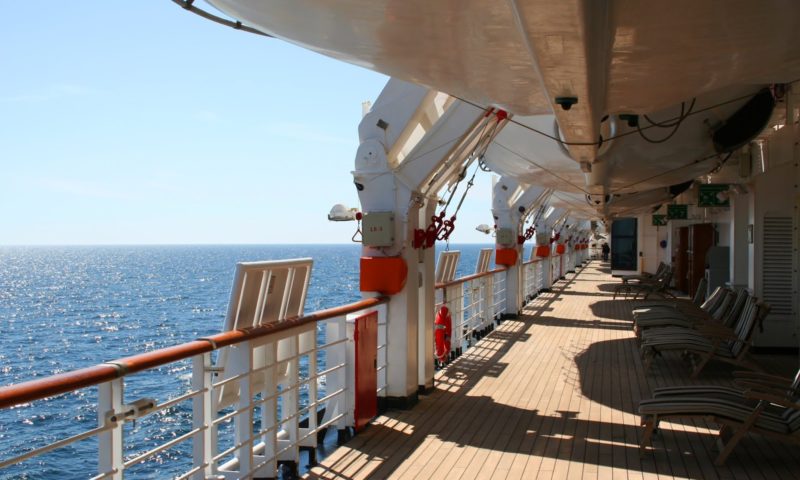The world’s 10 most photographed landmarks
The most popular global landmarks have been revealed, with tourists being told where to head for iconic picture perfect snaps.
The photography experts at ParrotPrint have researched the world’s most photographed landmarks to see which famous locations have and haven’t made the cut.
The top ten comprises those landmarks with the most hashtags on Instagram since it’s launch in 2010, with all landmarks being in existence for the life of Instagram including the Burj Khalifa which was also opened in 2010.
To some, the list will come as little surprise – these ten iconic landmarks are instantly recognisable to millions of people all over the globe.
However, there are some notable absences with The Great Wall of China, Sydney Opera House, Taj Mahal and Machu Picchu not making the cut.
No matter how incredible these sites are, for a landmark to be one of the the most photographed it has to be highly accessible and it is no surprise to see London and Paris with two landmarks each in the top ten.
But attractions in countries further afield such as Australia and Peru will naturally receive fewer visitors and so be photographed less despite their iconic status.
The Burj Khalifa and Burj Al Arab have risen rapidly up the list in recent years as Dubai has grown to be one of the world’s most important travel hubs with the Burj Khalifa expected to take the number one spot from the Eiffel Tower in the years to come.
A spokesperson for ParrotPrint said: “Millions of us flock to these iconic landmarks every year to try to capture the perfect image of them so it is fascinating to see which make the top ten and which miss out.
“The Burj Khalifa may soon take the number one spot from the Eiffel Tower, while London’s Big Ben and London Eye are sure to keep their place in the top ten for years to come with thousands visiting and posting images of these UK sites everyday.
“It is perhaps surprising not to see the Sydney Opera House in Australia or the Great Wall of China in the top ten but with smaller visitor numbers due to their locations it is difficult to see them making the top ten anytime soon.
“No one goes anywhere without their phones anymore, least of all when visiting iconic landmarks on holiday, so it’s no surprise to see the huge number of hashtags each landmark has built up on Instagram over the years.”
Here are the world’s most popular landmarks as researched by ParrotPrint.
- 1. Eiffel Tower, Paris
The Eiffel Tower is certainly the most iconic landmark in Paris so there is no wonder why it has been ranked the most instagrammable tourist attraction with 7.2 million hashtags on the app.
This 330 metre tall landmark towers over the heart of the French capital and gives tourists a fantastic opportunity to admire the stunning panoramic views of Paris. One of the most magical photo opportunities is when the tower is lit up in sparkling lights every hour from nightfall until the early hours.
- 2. Burj Khalifa, Dubai
The Burj Khalifa is currently the tallest building in the world; it’s unsurprising that this landmark ranks highly in the Instagram hashtag list with 6.2 million.
It may be a struggle to fit the whole 830 metre building into a camera frame but this award-winning structure symbolises the modernist architecture of Dubai to its thousands of visitors.
- 3. Grand Canyon, USA
The 277 mile long Arizona canyon had been carved out millions of years ago by the Colorado River and attracts vast numbers of tourists each year to marvel at this natural beauty, and has gained 4.2 million hashtags.
There are several visitor attractions at the Grand Canyon for those exploring the area to enjoy – such as the Grand Canyon Skywalk, viewing platform, and the opportunity for daredevils to go skydiving in the canyon.
- 4. Louvre, Paris
The Louvre is home to some of the world’s most famous pieces of art, such as the ‘Mona Lisa’, and is the most visited museum on the globe, and 3.6 million hashtags on Instagram.
The iconic glass pyramid at the entrance to the Louvre is what attracts tourists to Paris – a spectacle of art itself, the Louvre has long remained one of the most popularly photographed global landmarks.
- 5. London Eye, London
The London Eye is the best way to see the capital city for all its architectural beauty. The observation wheel brings in around three million visitors every year, making it the most popular paid tourist attraction in the UK.
The London Eye is an iconic feature along the city’s landscape and sends round its visitors in pods on a 30 minute ride. Originally intended as a temporary structure, the London Eye now remains one of the most photographed global landscapes and is consistently hashtagged on Instagram with 3.4 million.
- 6. Big Ben, London
Every visitor to London is bound to have a picture of Big Ben from their trip. The Big Ben clock tower is set along the River Thames attached to the Houses of Parliament so makes a great photo to capture some of the most important and historical buildings in London.
Big Ben has become a symbol of the UK and is immediately recognisable in pictures shown across the globe, usually featuring the iconic London black cabs and red buses. Big Ben has earnt 3.2 million hashtags over on Instagram.
- 7. Golden Gate Bridge, USA
San Francisco’s famous Golden Gate Bridge has 3.2 million hashtags on Instagram with visitors taking pictures of its iconic recognisable orangy red colour, which interestingly has to be continuously maintained. The Golden Gate Bridge famously stands out against foggy conditions, which makes for stunning photography opportunities.
- 8. Empire State Building, NYC
The Empire State Building is the seventh tallest building in the City and one of the most quintessential and recognisable structures in New York. Visitors to Manhattan can capture pictures of the most outstanding views of the Big Apple from the top of the building.
But to actually take a photo of the Empire State Building, head to other locations across the City – such as the Rockefeller Centre or Madison Square Park. Photographers and tourists love capturing the Empire State as the magnificent lights show from the rest of the City shines beautifully for miles and miles. Join the 3.1 million hashtags of the Empire State on Instagram.
- 9. Burj Al Arab, Dubai
Dubai’s Burj Al Arab stands 210 metres tall on a man-made island. The structure is a luxury hotel and has some of the most expensive rooms in the world – up to $24,000 a night.
Of course, most visitors to the Burj Al Arab are there to see its grand, modernist architecture and therefore easily racks up the 2.7 million hashtags on Instagram.
- 10. Sagrada Familia, Barcelona
Barcelona is famous for its Spanish metropolitan architecture, and the Sagrada Familia is the most iconic building in the city. It is currently the biggest unfinished Catholic church in the world, with construction starting in 1882. Photographers and tourists flock to the Sagrada Familia to witness its beautiful architecture before the building has been fully completed by at least 2026. The Sagrada Familia has a massive 2.6 million hashtags on Instagram.

